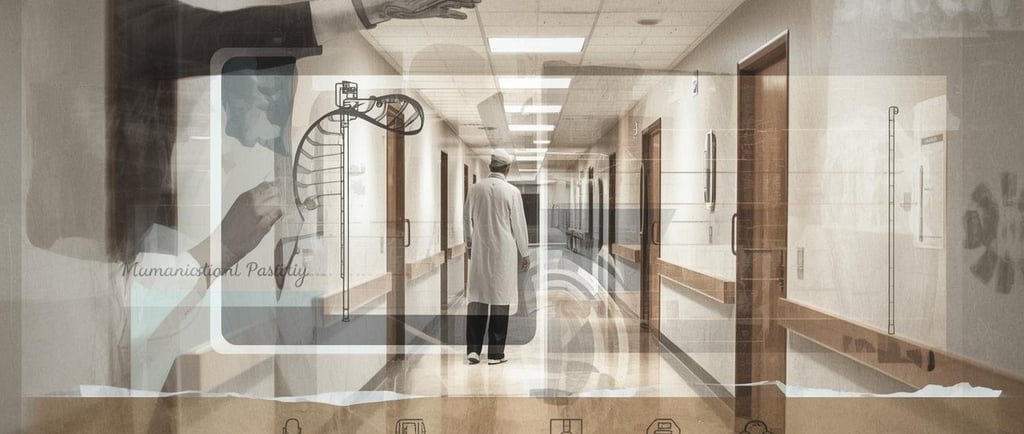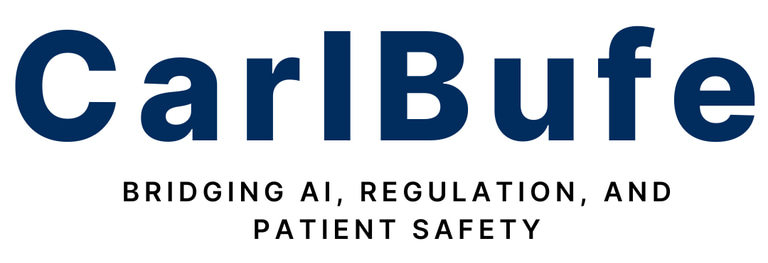AI in Healthcare: from hype to healing
Discover a balanced view on AI's role in healthcare, from current successes in diagnostics, drug discovery, and personalised medicine to future accelerations, risks, and safe adoption steps. Ideal for clinicians, administrators, and informed readers.
Carl Bufe
10/9/20252 min read


AI in Healthcare: from hype to healing
Healthcare is under real pressure—costs continue to climb, teams are stretched thin, and patient outcomes are uneven. That’s why AI is getting attention, not as magic, but as a way to take some weight off the system while keeping clinicians in the driver’s seat. For context, several analysts expect the US healthcare AI market to approach approximately $187 billion by 2030—less “wow,” more a signal that investment is following urgent needs. Public and private funding are both leaning in.
What’s actually working today
Diagnostics: AI helps sort and flag medical images, enabling urgent cases to be reviewed more quickly. Studies continue to show shorter wait times and improved sensitivity in areas such as radiology. Radiologists still make the call; AI just clears the path.
Drug discovery: Teams are utilising AI to identify targets and design molecules more efficiently, which can reduce timelines and costs. We’re seeing this shift from slide decks to R&D roadmaps.
Personalised medicine: By sifting through patient data, AI supports risk stratification and treatment selection. Trials suggest more personalised therapies and, in some cases, improved outcomes.
Two quick, real-world snapshots
Regional hospital radiology: They rolled out AI triage to prioritise scans. Backlogs decreased, urgent cases were prioritised, and radiologists still had final sign-off. Faster diagnoses, more time for the tricky reads.
Paediatric oncology pilot: A team tested an AI risk model that flags high-risk patients for earlier genomic testing. That meant more precise therapy plans. Early signals indicate improved survival odds; broader validation is underway.
Let’s be honest about limits & risks.
AI can go wrong if the data are messy or unrepresentative. Bias can widen inequities. Models drift. Privacy and security aren’t optional. And nothing moves without regulatory validation and hands-on clinician oversight. The safest systems keep a human in the loop, with clear accountability.
If you’re getting started (or unsticking a stalled effort)
Pick one narrow use case.
Check data readiness (quality, access, governance).
Perform a bias & safety review upfront.
Set success metrics you can measure.
Pilot with clinician champions.
Monitor after go-live and adjust.
I’m optimistic—but cautiously so. AI works best as a teammate, not a takeover. If you’ve tried a pilot (win or wobble), I’d love to hear what surprised you.
For additional information, check these referenced resources:
Grand View Research on AI in Healthcare Market: https://www.grandviewresearch.com/industry-analysis/artificial-intelligence-ai-healthcare-market
HHS on AI-Backed Childhood Cancer Research Funding: https://www.nih.gov/news-events/news-releases/hhs-doubles-ai-backed-childhood-cancer-research-funding
BMC Medical Education on AI in Clinical Practice: https://bmcmededuc.biomedcentral.com/articles/10.1186/s12909-023-04698-z
Fierce Healthcare on Digital Health Funding Surge: https://www.fiercehealthcare.com/health-tech/healthcare-ai-rakes-nearly-4b-vc-funding-buoying-digital-health-market-2025
© 2025. All rights reserved.
